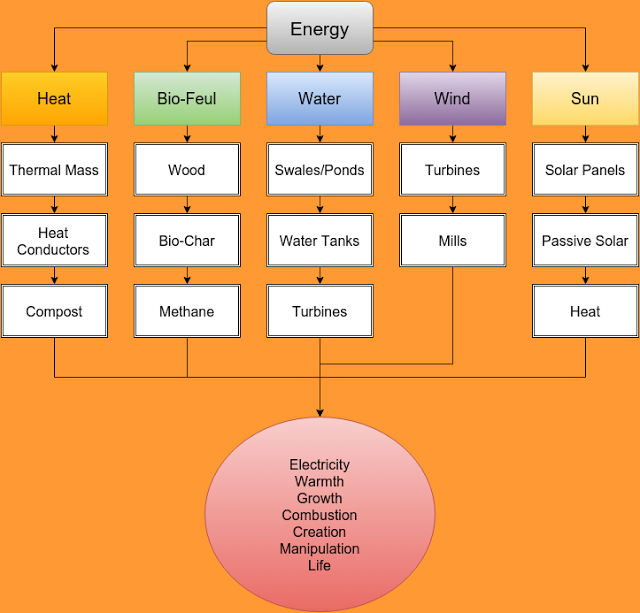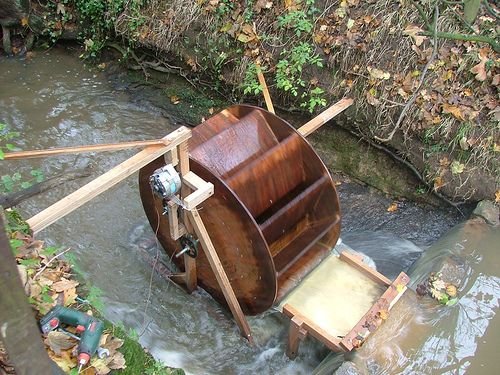Permaculture principle 2: Catch and Store Energy
Energy, the life sustain-er of the universe. It comes in many forms and by many avenues. Sometimes comforting us with its warmth, and other times bugging us with its blinding shine or blistering motion. However we can't escape its presence if we are to live and enjoy life, and it is an absolute necessity of our survival. Unfortunately, most of society is very poor at managing the energy around them. Designing their populated areas to divert it, only to have it brought back with artificial avenues. By simply changing our designer mind's perception of energy, we might work with it much more effectively and efficiently.

We have only to look to nature for a shining example of how this can work.
By its existence, the natural world must harness the energy it is provided with in order to survive.
The sun ought to be our example. Not only is it's existence necessary for life on our planet but it also has the largest diversity of uses, and conversions. We can catch the solar energy from the sun organically. Every tree we plant turns into a solar catching powerhouse, converting the suns energy into it's own and using it to produce biomass, lots and lots of biomass.
One tree can produce over 3,600 pounds of leaves over the course of a 60 year lifespan (source), and a mature oak can weigh anywhere from 2 - 3 tons (source). That is a lot of biomass! now imagine acres of trees!
Of course biomass isn't the only thing a tree can produce for us. we can harvest nuts, fruits, firewood, and lumber from trees as well. There is so much that we can do with the energy from the sun simply by planting trees. And we haven't even gotten into all of the other possibilities yet. Thermal masses, solar heaters, solar panels, solar ovens, and many more.
If we take all of the possible energy sources into account when designing a system, what excuses do we really have for letting them pass by us, only to have to bring them back again using lots of other energy to do so? Catching and storing energy is a crucial part of any whole system design. Overlooking it can lead to unnecessary work, time, and energy used that could be put towards other productive tasks.

For centuries, the energy provided to us by gravity was used in the form of waterwheels. Traditionally these were used to grind grains and spin fibers. Today however we can use the same methods to convert the flowing water into electricity and store it in batteries.
If we look at all of the energy that passes through our property as inputs that can be captured and stored, we are maximizing our surplus, giving us the highest possible potential for regeneration and life.
I plan on doing short descriptions of all 12 permaculture principles. I will also do more detailed posts on specific permaculture elements. Passive solar, water harvesting, zones, sectors, food forests, market gardens, etc.. Thanks for following me.
Hi! I am a content-detection robot. This post is to help manual curators; I have NOT flagged you.
Here is similar content:
http://sustainablebynature.blogspot.com/
been verified, here
This is a great starting reference for those wanting to design all-in-one type of eco-aware consumer products!
For sure, permaculture can be applied in many different places outside of agriculture. And it should be, I know several people who have built businesses around these principles
I agree with your assessment of energy. One of the most useful places to store energy is a garden. Raised bed intensive gardens produce a lot of stored energy in a small space. visit my page at http://mrselfreliant.com for another view of this idea. Thanks, Bud
I had a blog a while back called selfreliantnaturalist. I still own the domain I should kick it back up again
Simply Great Information and Presentation
So nice to find good content! Great article! Thanks for posting, look forward to seeing more, definitely following. Cheers @ecoknowme